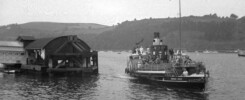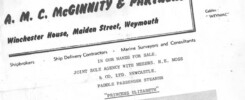In October 1965, half a century ago, there were twenty two paddle steamers left in the UK. Let’s have a look at where they all were that month and what the future had in store for them.
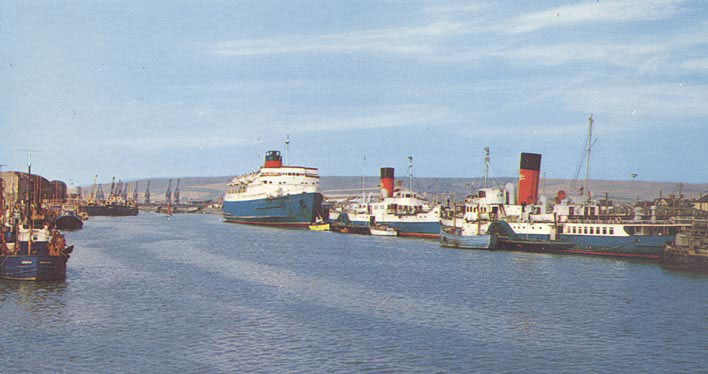
Starting in Sussex we would have found the Sandown and the Ryde, with the then Dover based car ferry Maid of Kent beyond them, laid up after returning to their usual winter retreat at the railway port of Newhaven in September after their summer season operating on the ferry service between Portsmouth, Southsea and Ryde with very occasional cruises thrown in through the Solent and Southampton Water.
This picture also illustrates how different masters do things differently. The Sandown’s captain has steamed her straight into the harbour head in to berth port side to. The Ryde’s swung her outside the harbour and backed all the way up using the bow rudder to berth head out starboard side to.
The Sandown never steamed again after this being towed away in February 1966 for scrapping in Antwerp. The Ryde had another four seasons of Solent service to go before being withdrawn in September 1969 and sold to usurp the static role of the…
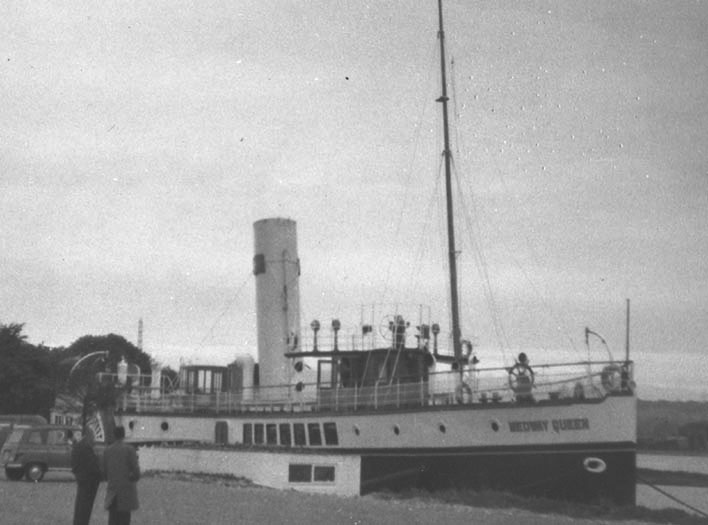
…Medway Queen which, in October 1965, was newly arrived from the Thames at Binfield on the Isle of Wight. There she was refurbished by the Ridett brothers for a new career as a static pub and restaurant and this lasted until the arrival of the Ryde. After that she went downhill and eventually sank before going home to the Medway on top of a barge in 1985. Now she has a new hull built in Bristol and there are hopes that further work may make her operational once again one day.
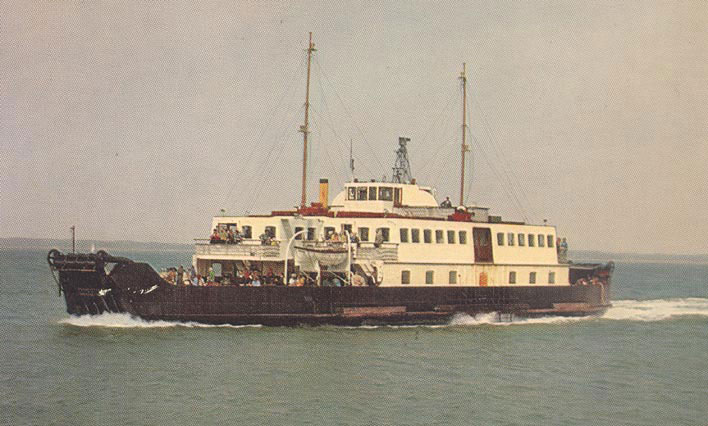
A few miles down the road at Yarmouth we would have found the Farringford running the ferry service to Lymington. She doesn’t look much like a paddler does she but that is how she was propelled and, with her independent paddle wheels, was very manoeuvrable although she did lack the sideways thrust of her Voith Schneider colleagues so she always had a propensity to land heavily at Yarmouth in a combination of fierce incoming tides and strong SW winds both setting her onto the berth. It is perhaps worth saying again that she did have independent paddle wheels and she did carry passengers so when anyone tells you that vessels with independent paddle wheels were never allowed to carry passengers then point them in the direction of the Farringford.
Farringford was transferred to the Humber in 1974 to replace the paddle steamer Wingfield Castle on the Hull to New Holland ferry service and continued sailing there until the new Humber Bridge was opened in 1981. Although then sold to the Clyde’s Western Ferries this did not work out and she was scrapped in Hull shortly afterwards.
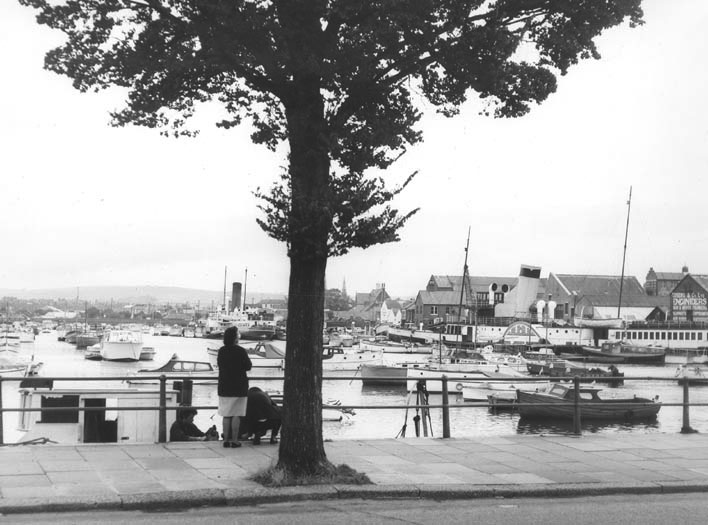
Moving westwards to Weymouth we would have found the Princess Elizabeth (left) and the Embassy (right) laid up in the same berths as in this photo taken one year later. In October 1965 they had just finished their seasons based at Weymouth and Bournemouth respectively. The Lizzie would never steam again although, after various incarnations as bars in London and Paris, she is still with us today as a conference venue in Dunkirk albeit minus her engines. The Embassy still had one more sailing season to go in 1966 before being towed away to be scrapped in Ghent in May 1967.

Down at Dartmouth we would have found three paddle steamers. The Kingswear Castle completed her 1965 season in early September and by October was laid up. Her long term future was bright as all visitors to this website will know well.
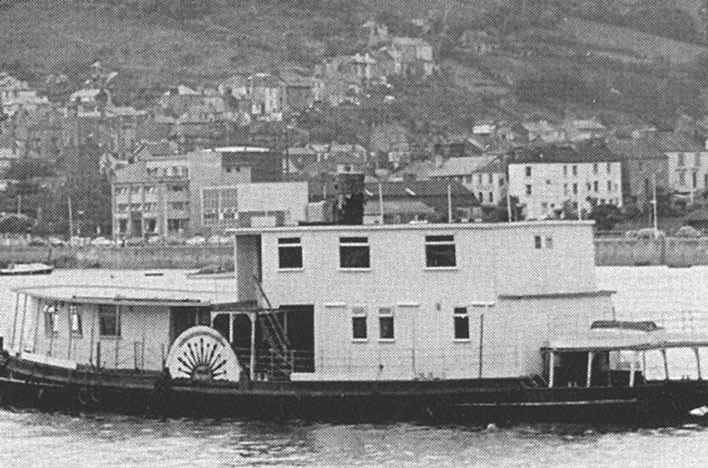
Her sister Totnes Castle had spent her second summer at Dartmouth adorned with all these on-deck sheds which were put on to provide accommodation for a sailings school. By October 1965 the business was in difficulties and Totnes Castle was eventually sold for scrapping at Plymouth two years later a fate she defied by sinking on the way round.
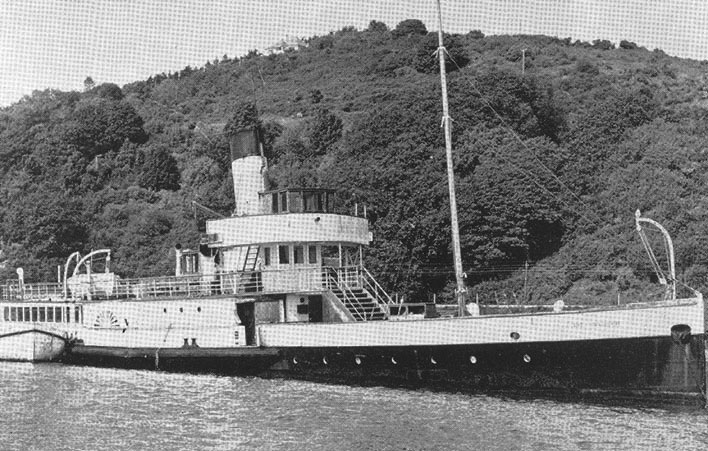
Also in Dartmouth then was the Consul, now back with her original name of Duke of Devonshire. Her last public sailing had been from Weymouth a year earlier and, after steaming round in February 1965, she had been modified to act as another sailing school base. For this she was not very suitable not least because by this stage in her career her decks were prone to leak which always mitigates against snug sleeping arrangements.
Consul was destined to spend three more summers on the Dart before she was towed to Southampton in October 1968 to be scrapped. PSPS Wessex Branch secretary Mrs Eileen Pritchard organised a visit to her during this unhappy event by which time a lot had been taken off including much of the engine which was lying about in pieces on the dockside. Determined to save something from her, Mrs P bought one of the Consul’s bridge telegraphs and the engine room end for it which are both now in the PSPS collection.
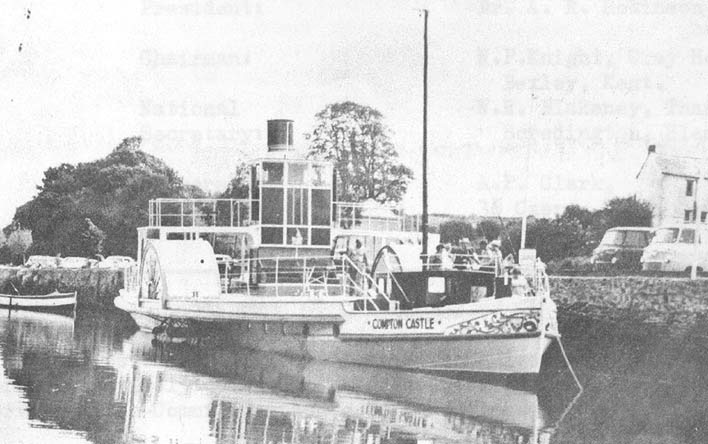
Just a short run along the coast we would have found the Compton Castle at Kingsbridge where she was now open as a tea shop. At this stage in her career her owners, Mr Baume and Mr Wood, occasionally raised steam in the boiler and turned over the engine for the delight of visitors and from time to time for film crews. There are some good shots of the engine in motion in an episode of the BBC’s “The Onedin Line” and in a now long forgotten TV ad for Birds Eye. Compton Castle remained at Kingsbridge until 1978 after which she was moved first to Looe, where plans were hatched but not fulfilled to return her to service, and then on to Truro where she remains to this day. Her engine and pumps were removed after her Looe period and, after many years on display at Blackgang Chine on the Isle of Wight, have now been bought by the Paddle Steamer Kingswear Castle Trust.
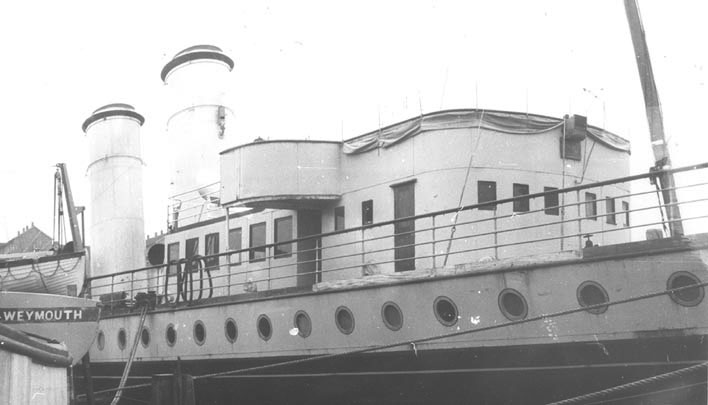
Moving north now and onto the Bristol Channel we would have found both the Bristol Queen (pictured above at Weymouth two years earlier) and her quasi sister Cardiff Queen laid up in the Queen Alexandra Dock in Cardiff. The Bristol Queen was scheduled to sail on into the first weekend of October but sustained damage at Minehead on 24th September which put paid to that and led to her earlier than planned withdrawal.
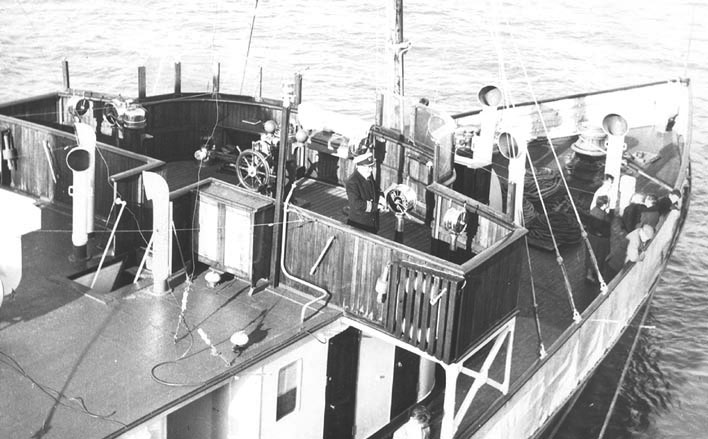
The Cardiff Queen – didn’t she have the most lovely open bridge?! – ended her season on 23rd September but was promptly brought out again two days later to take over the damaged Bristol Queen’s service running her last trip of the season on 3rd October down the Channel to Ilfracombe.
Cardiff Queen had also been in the wars that summer and ended her season with a large dent in the stern caused by a collision with a coastal tanker at Barry on 16th August and smashed railings forward after too close an encounter with the quay at Swansea later in the month. She looked a sorry sight.
The arrival of Red Funnel’s motor vessel Vecta in September for trials to test her suitability for work on the Bristol Channel caused some concern amongst paddle steamer lovers at the time and this turned out to be well justified. The Cardiff Queen was withdrawn one year later and towed away in April 1968 to be scrapped at Newport. The Bristol Queen continued into a further season but after a major paddle wheel breakdown off Barry on 26th August 1967 was withdrawn and put up for sale. She left Cardiff on 21st March 1968 under tow for the breakers yard at Willebroek in Belgium.
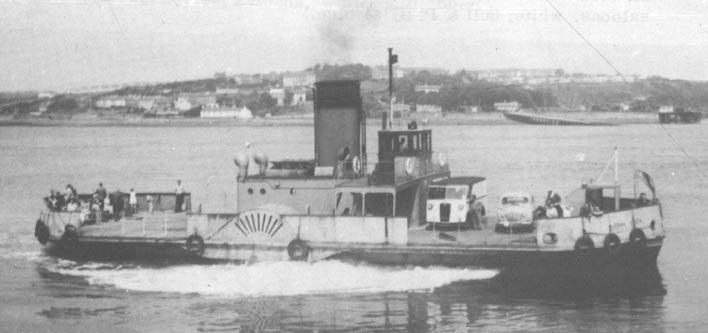
Moving westwards, if we were lucky, in October 1965 we might have been able to get a trip on the Cleddau Queen which, with her Voith Schneider propelled consort Cleddau King, maintained the Pembroke Dock to Neyland ferry at Milford Haven. Like the Farringford the Cleddau Queen had independent paddle wheels which in her case were turned by two separate compound reciprocating steam engines. So here we have another example of a paddler which had independent paddle wheels and which carried passengers.
Sadly her steam days were not to last. In 1968 her boiler and machinery were removed and she was fitted with a similar Diesel propulsion unit to the Cleddau King. Both ships were withdrawn in 1975 when a new bridge took away their purpose after which the hull of the Cleddau Queen was used for survey work and fetched up for a time in Portland Harbour in, I think, the late 1980s. Does anyone know what happened to her after that?
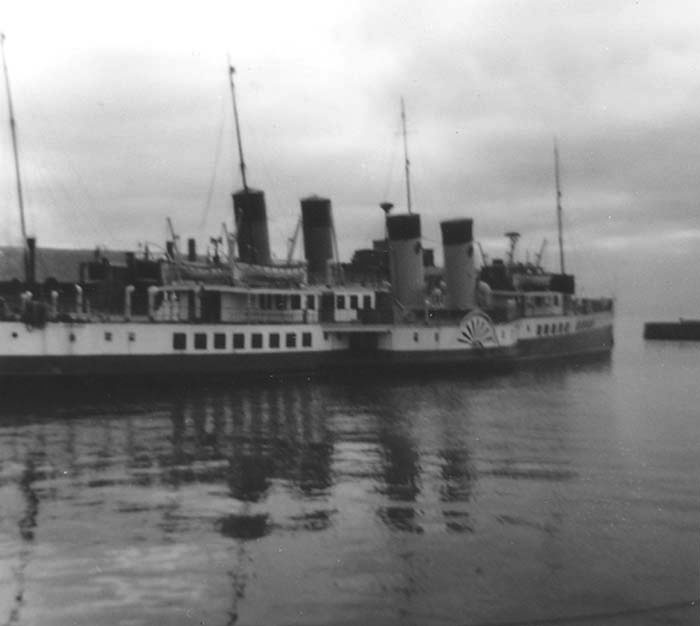
Moving northwards the next paddle steamers we would have found were on the Clyde with the Waverley pictured here alongside the turbine steamer by appointment to the Oban gentry the King George V in the Albert Dock in Greenock in October 1965.
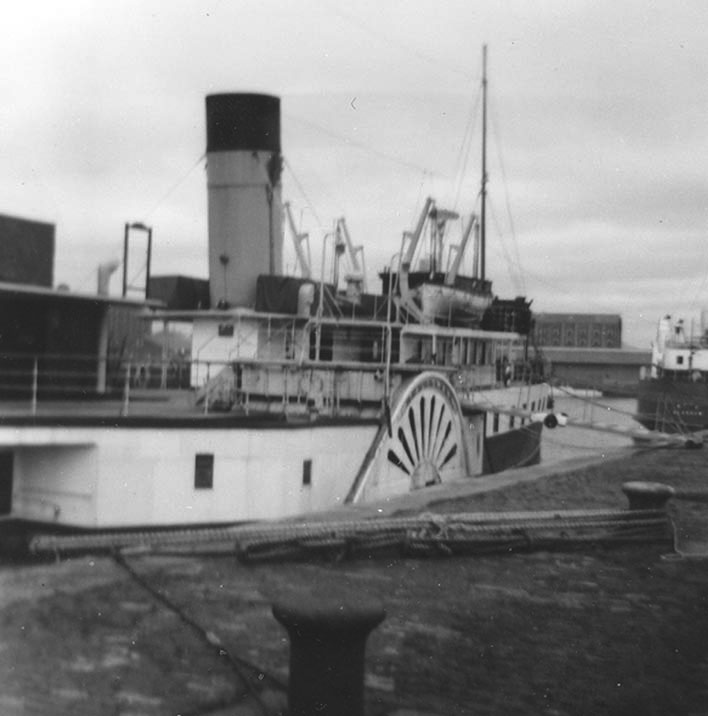
Also in the Albert Dock at that time was the Diesel-electric Talisman. The following month she moved to Lamonts Shipyard for her annual refit before taking up a winter role as relief passenger vessel based at Gourock on 14th December.
Sadly she had no future. Problems with obtaining spare parts for her Diesel engines led to her running on reduced power in 1966 and her withdrawal at the end of that season. She moved under her own power in October 1967 to the breakers yard at Dalmuir.
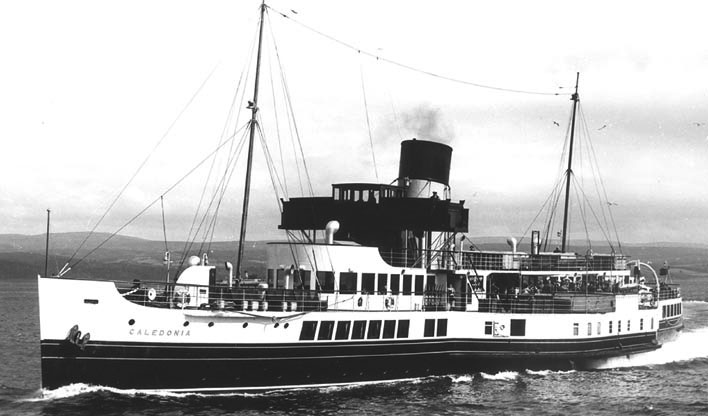
Just down the road at Gourock we might have been able to take a trip on the Caledonia which from late September through to her relief by the Talisman in December was the reserve Clyde steamer. Although for most of the time she lay idle she did run the Sunday ferry service to Millport and undertook various tendering jobs as well as filling in occasionally on the Holy Loch run.
Caledonia had four more years of service after this before being withdrawn at the end of the 1969 season and towed to the scrap-yard at Dalmuir in February 1970. Fortunately that paddle steamer night in shining armour Tony McGinnity beavered away in the background and managed to persuade Bass Charrington to buy her for use as a static restaurant on the Thames. He arranged the deal and the tow and was proud to welcome her to London for her new career.
Unfortunately she caught fire in 1980, was damaged beyond economic repair and ended up being towed away to the scrap-yard at Sittingbourne on the Swale in Kent.
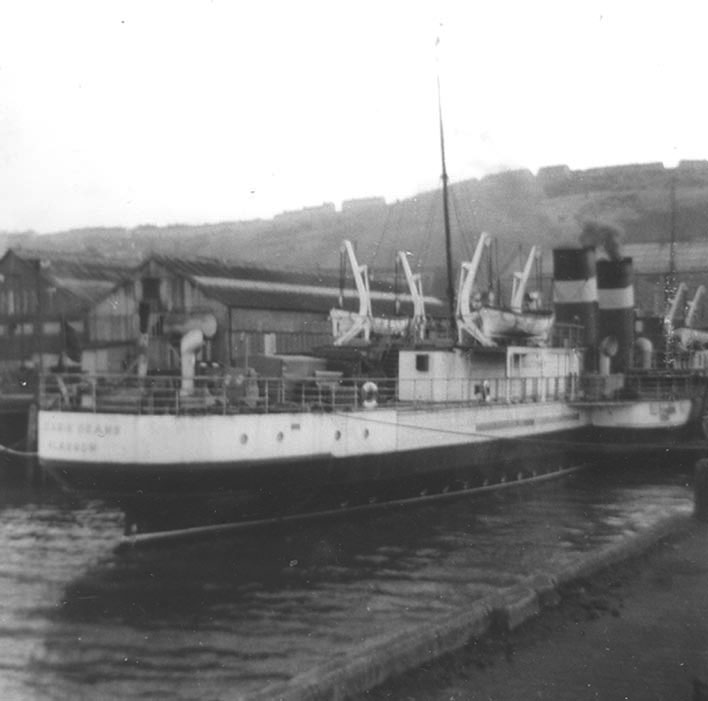
Meanwhile October 1965 saw the Clyde paddle steamer Jeanie Deans undergoing a major refit at Lamonts Yard at Port Glasgow for her proposed new career on the Thames for a consortium headed by PSPS member Don Rose.
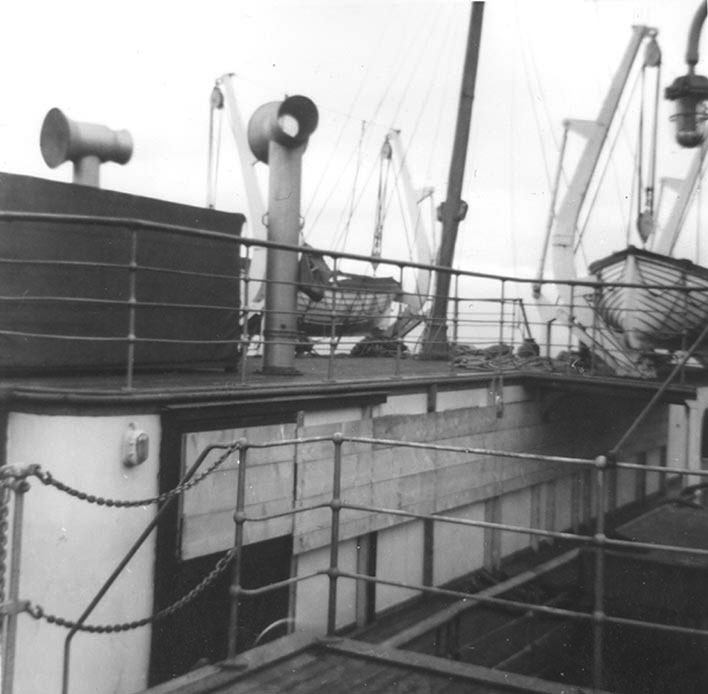
Large amounts of money were spent getting her ready not always to good purpose. For example, not only were the saloon windows in the hull itself quite sensibly boarded up for the run round but also a decision was taken to board up all the windows including those in the deck shelters. As you can see in this picture this meant that you couldn’t open the doors to get in and out.
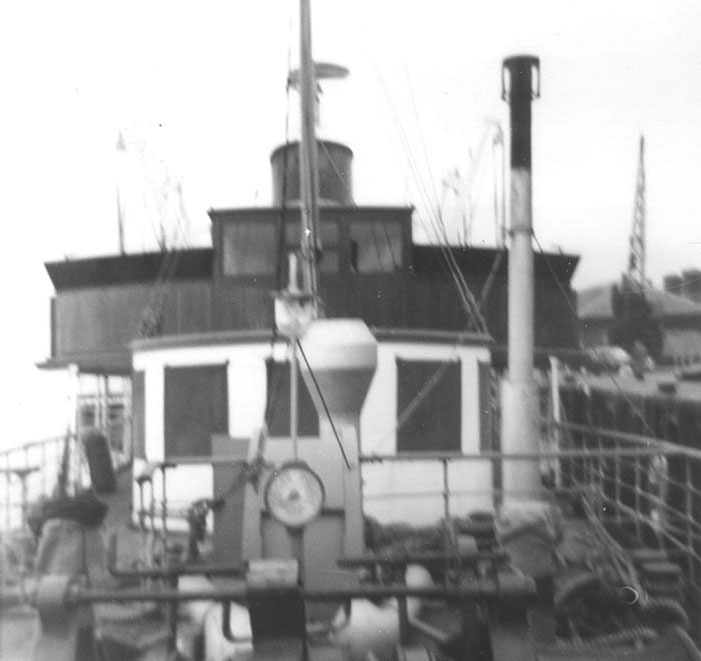
Large steel plates were fashioned and rolled to shape before being welded on to cover these deck shelter windows at vast cost. It all had a bit of the feel of boarding up the ship for an Atlantic crossing rather than for a well planned near coastal voyage.
Eventually the Jeanie set off on Bonfire Night encountering various difficulties and breakdowns on the way as well as heavy seas and took nearly ten days to reach the Medway with various stops and starts.
Renamed Queen of the South she sailed on only a handful of days from London in 1966 and 1967 as one woe piled upon another until eventually the money ran out and a writ was nailed to her mast rather improbably to my mind by Capt Woods who had brought her round from the Clyde and supervised the work of getting her ready in the run up to the 1966 season. The end was nigh and the Queen of the South ex Jeanie Deans was towed away on 27th December 1967 to the scrap-yard in Antwerp.
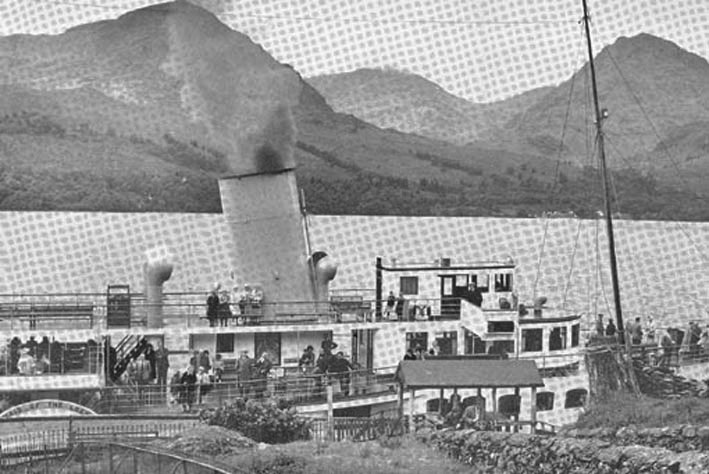
There was an altogether much brighter story a few miles north at Balloch on Loch Lomond where, in October 1965, the Maid of the Loch was laid up as usual after finishing yet another summer season of sailings up and down the Loch twice a day. On and on this roster went year after year as all the other operational UK paddle steamers were withdrawn one by one until 1981 when the whistle was finally blown. By then she and the newly revitalised Waverley, now sailing in preservation, were the only two paddle steamers in service in the UK.
Subsequently Maid of the Loch has enjoyed mixed fortunes but all that is set to change with the recent announcement of a major lottery grant setting her on the road to full restoration and a return to service. In addition to that the Maid of the Loch has other things in her favour. She has her own slipway adjacent to her berth at Balloch which is a massive economic plus. And, as an inland waterway passenger vessel, she is outside all the STCW sea-going requirements in terms of certification, manning and equipment which so drive up the costs of operating the sea-going Waverley.
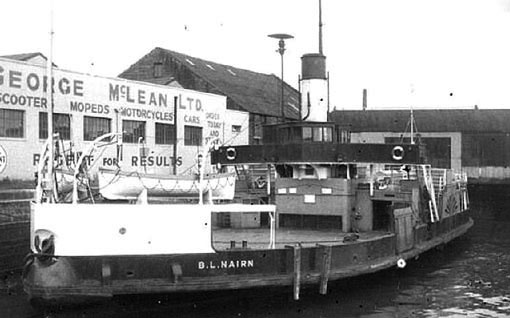
Crossing eastwards and northwards the next paddle steamer we would have come to in October 1965 was the B L Nairn and, if we had been lucky, we might have managed a trip on her too on her usual roster on the ferry service across the Tay at Dundee which she maintained with her Voith Schneider consort Abercraig. Like the Cleddau Queen the B L Nairn had two separate compound reciprocating steam engines, one for each paddle, so here is yet another example of a paddler which had independent paddle wheels and also carried passengers.
Sadly the B L Nairn did not have a rosy future. With the opening of a bridge across the Tay the following summer she was withdrawn on 18th August 1966 and ended up in the scrap-yard at Blyth a year later.
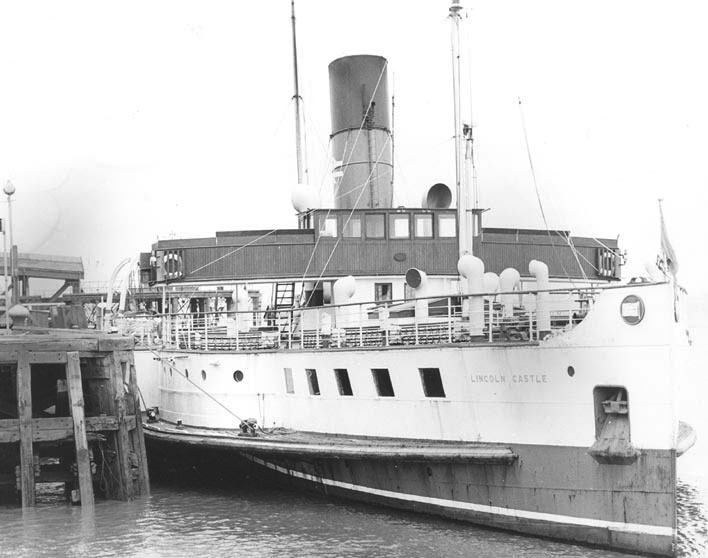
Going south we can complete our tour of paddle steamers in the UK in October 1965 by stopping off at Hull and New Holland where we would have found at least two of the three beautiful paddlers there in service quietly sailing backwards and forwards across the fascinating and in some places very shallow Humber Estuary. So shallow was the water in the approaches to New Holland that all three paddle steamers were equipped with long poles which a crew member could thrust downwards from the forward sponson to feel for the bottom to check how much water there was around the lowest of the spring tides.
Like the Maid of the Loch, Kingswear Castle and all the forty or so paddlers still sailing in European waters today the Tattershall Castle, Wingfield Castle and Lincoln Castle (pictured above) never used head and stern ropes with windlasses or capstans to haul themselves alongside on their regular service. As you can clearly see in this picture they used a spring and a breast rope from the forward sponson on which they paddled gently astern to bring themselves alongside with the aft rope to hold the stern in going ashore from the aft end of the sponson when they were settled alongside.
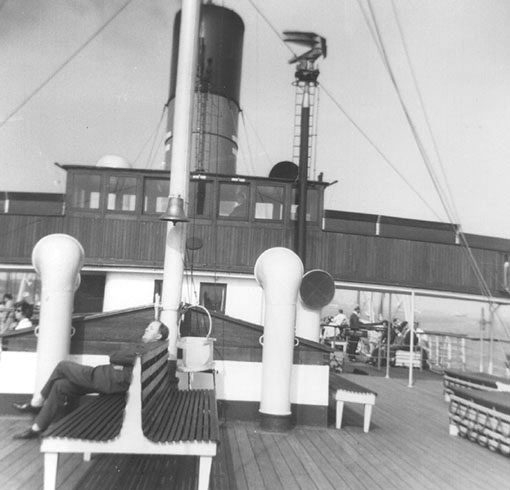
Their bridges were enormous for the size of vessel extending the full width of the ship across the paddles and…
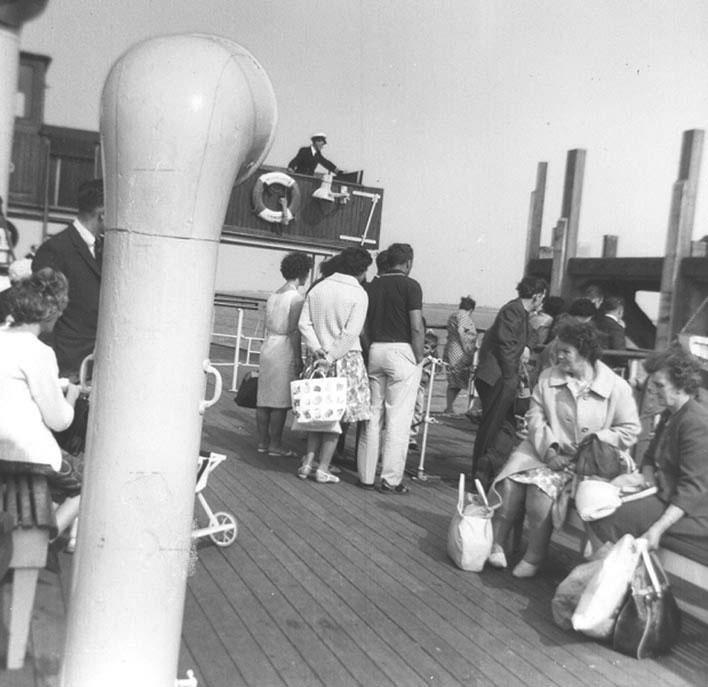
…the promenade decks had a spacious and roomy feel to them.
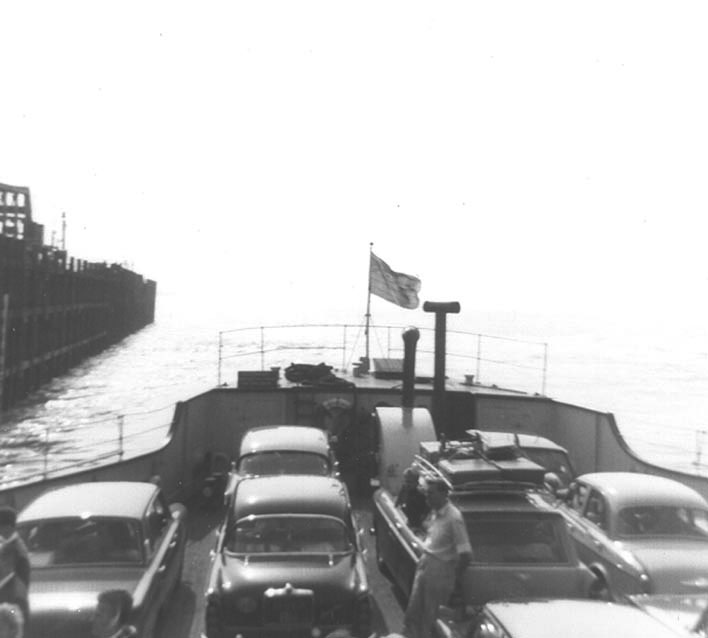
All three paddlers could also carry cars back aft.
Although they lasted longer than most others their days were numbered. First to go was the Tattershall Castle in 1972. The Wingfield Castle was replaced by the Farringford in 1974 and she carried on alone until the Humber Bridge opened in 1981 after the Lincoln Castle was withdrawn in 1978.
Unfortunately the Lincoln Castle was broken up in Grimsby a couple of years ago but the other two sisters are still with us, the Tattershall Castle providing food and drink alongside the Embankment in London and the Wingfield Castle open as a cafe/museum ship at Hartlepool.
So that was October 1965. Twenty two paddle steamers still around in the UK with no less than twenty of them having been in steam at some stage that year, seventeen of them actually having run in passenger service and one, the Jeanie Deans, about to be put back into passenger service after a year out.
Within only five years, by 1970, only six remained in service: the three on the Humber, Maid of the Loch, Waverley and the Farringford.
It was a swift and devastating decline.
Kingswear Castle returned to service in 2023 after the first part of a major rebuild which is designed to set her up for the next 25 years running on the River Dart. The Paddle Steamer Kingswear Castle Trust is now fund raising for the second phase of the rebuild. You can read more about the rebuilds and how you can help if you can here.
John Megoran

